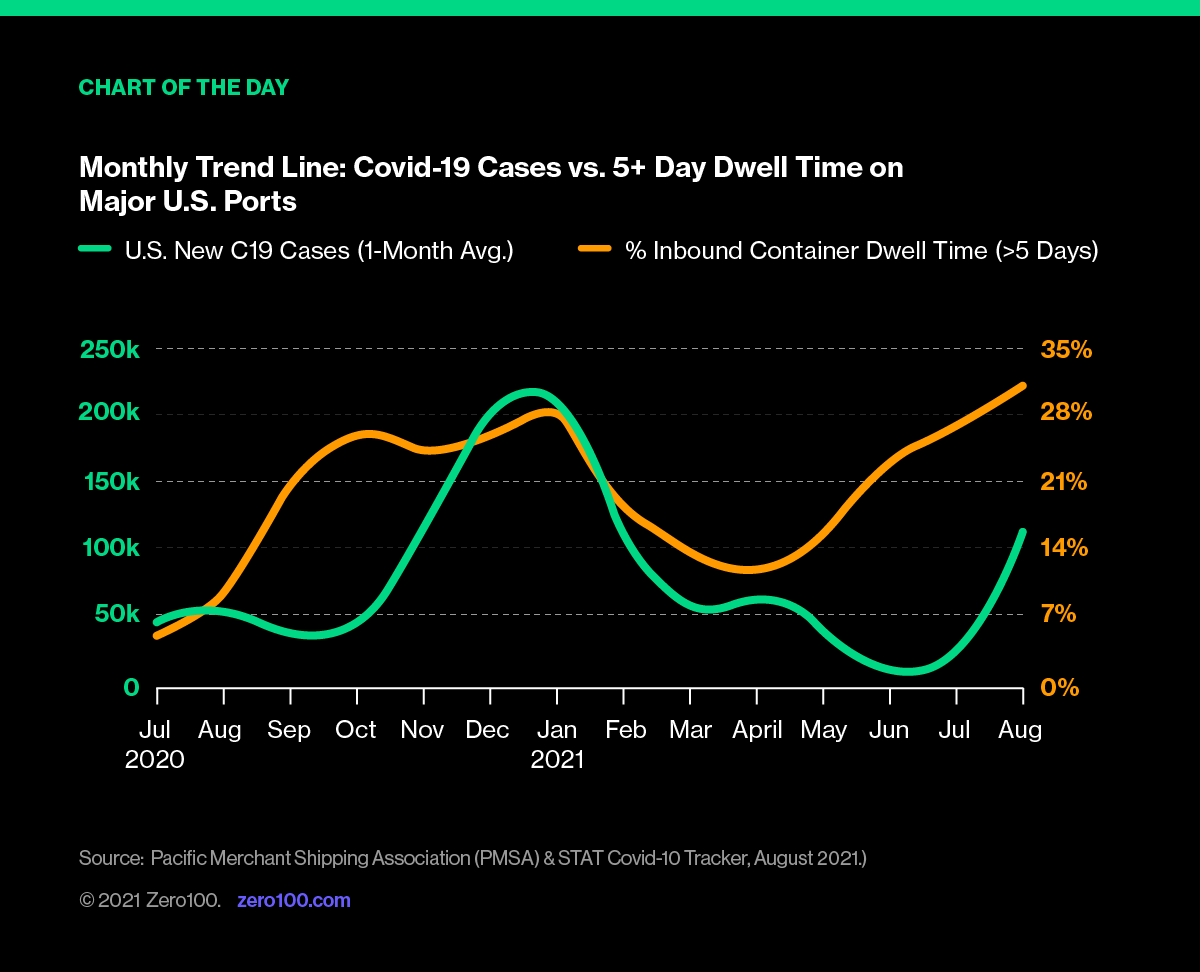
Shipping Congestion: The Worst is Yet to Come
As financial pundits fixate on the cost of ocean container shipping, smart operations leaders need to focus on how to better monitor dwell time at major ports and factor great uncertainty into Q4 projections.
Last week, the U.S. Commerce Department reported a precipitous drop in retail sales in the wake of the ongoing spike in new COVID cases, exacerbated by declining consumer confidence coupled with continuing supply chain disruptions. The financial markets responded to this data with brief apprehension, sliding -0.8%... before reflexively recovering 80% of the lost ground by opening bell this morning.
As our collective notion of a post-COVID operating environment matures, a central tenet of behavioral economics is under threat. Namely: ‘the best predictor of future behavior is past behavior'... until it's not. At present, corporate leaders, financial pundits, and investors alike have little evidence that systemic risk (vs. industry-specific hazard) will prove punitive to near-term valuations.
NOT so fast...
Even if you accept that (flimsy) premise, the true litmus test is approaching hard and fast in the guise of Holiday Season 2021. Anecdotally, ocean container shipping rates from Shanghai to Los Angeles are up +220% over the past year, ricocheting to $11,000—with little of that cost passed on to the end consumer (for now).
As we assess the aftermath of a two-week shutdown of the Meishan terminal in China's second busiest port (Ninbo-Zhoushan), the downstream impact of shipping congestion is starting to come into focus. Data analyzed by Zero100 from the Port of Los Angeles demonstrates increased container dwell time is now a leading indicator of active infection rates domestically. In other words, inbound delays are more a function of congestion in the system—versus a chokepoint at the destination (until a new pattern emerges).
Making the best of a bad situation
With three spikes (and counting), Chief Risk Officers and Operations Specialists are arguably no longer the blind leading the blind. Sufficient data exists to build a new (and increasingly robust) model for expected shipping congestion—months ahead of time. In effect, the historical data record is filling in to inform new assumptions and test new hypothesis. Collectively, we are moving from anomaly to a new state of empirical assumptions. In conjunction with more active communication and resetting clear expectations with customers, we can find new, more agile solutions to this problem set. Solutions that ultimately prove more responsible and risk tolerant than simply ‘sandbagging' Q4 expectations.

Critical Reading
WALL STREET JOURNAL
Covid-19 Closure at China's Ningbo Port Is Latest Snarl in Global Supply Chain
Commentary: A single confirmed case has shuttered a major container terminal, leading to expanding congestion in neighboring ports of Shanghai and Hong Kong, underscoring logistical logjam ahead of year-end shopping season.
#portcrisis #logistics
BLOOMBERG
Pandemic's Economic Shock Fuels Scrutiny of Global Value Chains
Commentary: Surprising assessment of the degree of economic contraction versus relative “openness” of trade across 26 economies throughout APAC.
#COVID #APAC
HARVARD BUSINESS REVIEW
The U.S. Needs to Reimagine Its Pharma Supply Chain
Commentary: Update on the rollout of a strategic reserve for active pharmaceutical ingredients, foreshadowing Pharma industry's response (beyond PPE) to the Supply Chain Disruptions Task Force's 100-Day Review.
#pharma #policy